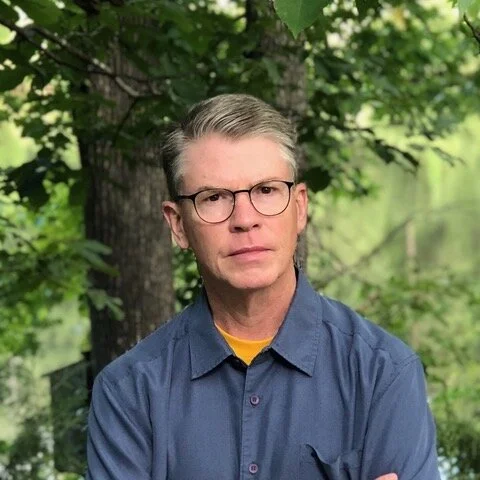The first year after I moved from California's central coast to western Massachusetts, when people would hear I'd relocated from the west coast, their eyes would get big. Some would press their palms to their chests. “Oh! How are you handling the New England winter?!” they'd gush, all concern, then think to tack on, “and you're from California?”
When I'd admit that no, I wasn't originally from there, they'd stop short, hands falling limp from their breast, empathy all but evaporated in the dry winter air. Some would literally shrug and scowl as if wounded by being so mislead or shoo away an invisible nuisance in the air between us with a flick of their wrist.
I'm very interested in how we let each other in; and don't. I'm endlessly fascinated by the small town—what it gives us and what it takes away. What it allows in terms of connection, a lifting up of the individual, and what it squelches and stamps out.
The speaker of the poem "Somewhere in New England" is lost—figuratively and literally, jarred by a recent uprooting and looking to at least create roots in the form of a garden. The two people in the poem struggle to share a common language because their baseline vocabulary, that is, the physical landscape they value, is different.
I enjoy many geographies. When a space is no longer somewhere you are just visiting or looking at with curiosity and distant admiration, however, but becomes where you live, a place you are asked to claim, the stakes change. Can I relinquish the vistas I fell in love with and that, in the end, are the ones with which I identify? I firmly believe place and self are inextricable, one from the other.
Place, consequently, means a great deal. As well, the absence of place plays at least as big a role in who we are. (Just ask any child of immigrants who has heard all their life of a "home" they've never visited.) But where we belong isn't simply a matter of how the newbie manages to fit in. It also has to do with how the new place attempts to meet or accept them. The questions around this topic expand in complexity rather quickly, from the personal to the political. Can I embrace new people entering the place I call home, even if that means it will change because of their presence? Can I allow someone to claim a space as theirs if they are not native to it but have chosen it?
Whether the seed grows isn't only about how strong or adaptable the seed is, but also whether the environment it's placed in is welcoming to its needs. It's a transaction. I know people who've overwintered fig trees in Boston and people who grow lilac bushes in Santa Cruz but believing the exception proves the rule only punishes those who fail.
I'm a pretty pathetic version of a New Englander. I don't rake leaves, I like to speak in impulsive, effusive gusts, and seeing snow fall brings me close to hyperventilating. I'm also lucky. I didn't move because of war, drought, threats to my life, or economic devastation. And my displacement has brought me many poems.
While not solely about a sense of displacement, "Coastal Redwood" is also born in part from just that. It comes from a series of mine, a dozen poems strong and counting—love letters to west coast flora that I miss.
When considering the redwood, it's hard not to think about all the trees have lived through. This poem moves closer to prayer. I am using writing to find or ask for how to continue to see hope in a world that is so weighed down in despair.
The poem (and the series) owes a debt to three poets I greatly admire. The first is Louise Glück, whose book Wild Iris is a work of sheer brilliance. While my poems don't speak in the voice of the plants, the speaker in them is still talking to the plants in anticipation or acknowledgement of some kind of wisdom or message arriving in response. I didn't start writing with Wild Iris consciously in mind, but I had absorbed it, my permission slip. The second poet my series draws inspiration from is Ada Limón. She tends to have a lot to say about trees in general, but in relationship to "Coastal Redwood," I think of Ada's poem "Ancestors" where she writes, "I've come here from the trees—" and "imagine you must survive / without running."
Finally, the plant series wouldn't exist if I didn't happen to have shown up for a workshop at a poetry festival in Amherst, Massachusetts given by Aimee Nezhukumatathil. It focused on epistolary writing and at some point, she suggested writing to something non-human. Maybe it was sitting there in an audience of people dressed in black and brown, turtlenecks and jeans, and watching Aimee in her yellow dress and pink sweater looking like something blooming herself that released the idea.
When I visit California now and walk among the array of succulents, rosemary draping its periwinkle flowers from window boxes, Mexican sage with its soft, purple flowers reaching, I feel the same rush as I do sitting down with old friends there. Short of Mexican sage and old friends, when I'm in need of beauty and companionship, I turn to poetry.



